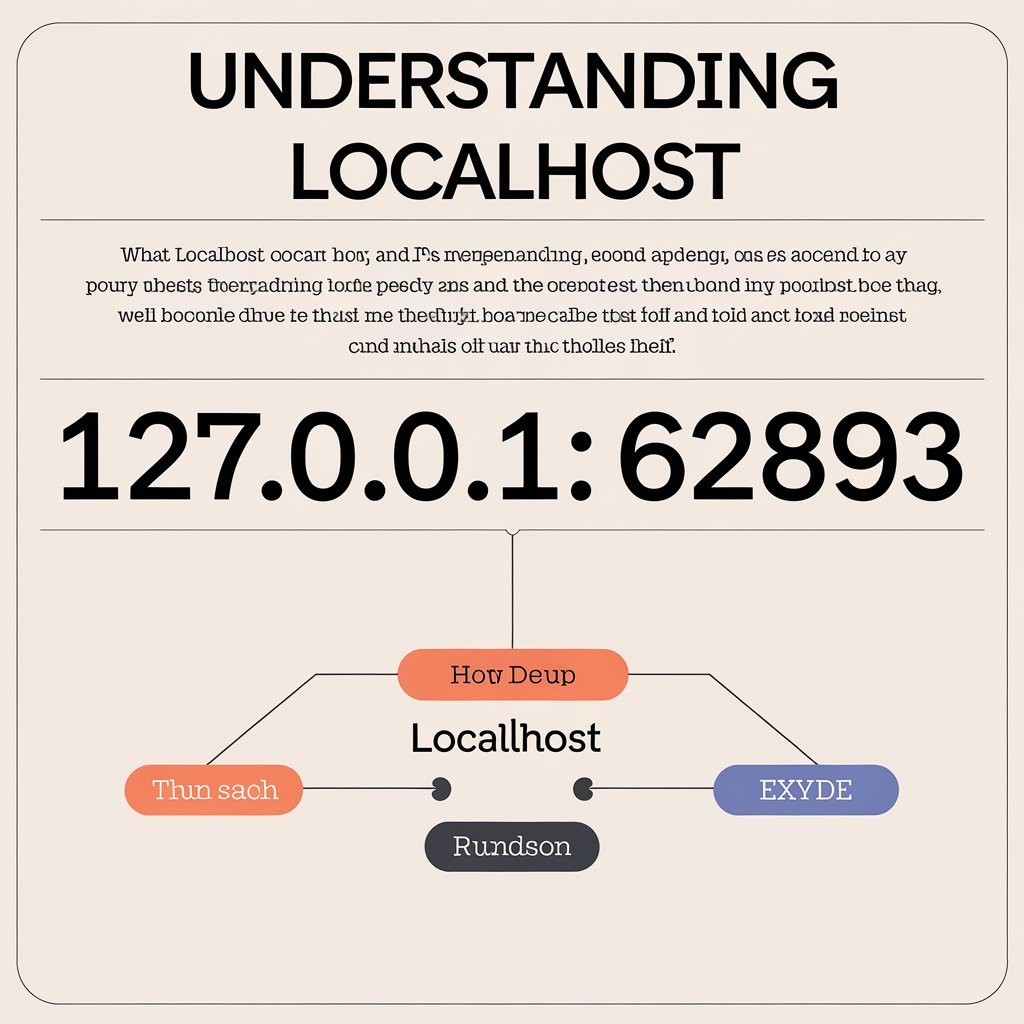Understanding localhost within computer networking and development is important at different levels, from debugging web applications to configuring network services. Probably the most common IP address related to these tasks is 127.0.0.1, often referred to as “localhost.” This article will seek to define what localhost is and what importance the IP address 127.0.0.1 carries and the implication of ports like 62893 when relating to localhost.
What is Localhost?
The word localhost is also referred to as a local computer or server and refers to a location where some process or service is being executed. It is principally used as a loopback network interface with which a computer can be made to communicate with itself. This concept is similar to you talking back to yourself.That means when someone accesses localhost, they actually access the IP address 127.0.0.1.
The localhost interface helps both developers and system administrators in a variety of functions, including testing and development, without bothering the larger network or even requiring access outside. It is a utility tool for debugging, running local servers, and doing configurations without requiring an active Internet connection.
What is an IP Address 127.0.0.1?
The range for the IPv4 loopback address range utilized the class A network number for the range from 127.0.0.0 through 127.255.255.255. Such addresses are used for internal test purposes within one machine and cannot be routed to other devices. Any network application that is connecting to the address 127.0.0.1 is speaking directly to the local machine, bypassing any external network interfaces.
The Internet Engineering Task Force, IETF, defines RFC 1122 and RFC 3330 as the standard localhost address, which is specified as 127.0.0.1. This address is special because it’s always routed to the very same machine, independent of the network configuration or physical network interfaces.
The Role of Port Numbers
In addition to IP addresses, network communication involves port numbers, which are responsible for routing traffic to particular services or applications running on a server. You will see something such as 127.0.0.1:62893; the one after the colon is the port number.
Port numbers are divided into several ranges:
Well-known ports: 0-1023: This range is reserved for common services, such as HTTP on port 80, HTTPS on port 443.
Registered ports-are those from 1024 to 49151. Applications that are not standard but still require a registered port number use it. Dynamic or private ports-are those from 49152 to 65535. They are usually used for ephemeral or temporary connections and, therefore, operating systems often use them in some form of dynamic assignment.
In that context, port 62893 falls under the range of dynamic or private ports. Applications commonly make use of dynamic ports for temporary connections, and these are assigned by the operating system upon startup of the application. A web server running on localhost may use a dynamic port like 62893 to serve an application or just a specific service.
Localhost and Web Development
The localhost is irreplaceable to the web developers. During web development, developers usually operate a local web server on their machines and perform testing and refinement of code there before deployment to the live environment. This local server usually listens on localhost, which is 127.0.0.1, and some port.
For example, a developer would start a local web server that listens on port 62893. Then, the developer would start a web browser and connect to http://127.0.0.1:62893 to fetch their local development site. This way, you can do rapid development and testing without having to either push the changes to a remote server or expose the development site to the internet.
Localhost in Network Security
From a network security perspective, localhost is utilized for secure communications. Since the traffic to 127.0.0.1 never leaves the local machine, it can be isolated from other external networks. That will give you an even more secure environment in which you can test applications or configurations that may have vulnerabilities.
The design of most security tools and applications runs on the host with the idea of analyzing network traffic, performing vulnerability scans, or simulating an attack within the comfort of a controlled environment. For example, a pentester may work on localhost running such tools as Metasploit or Wireshark in testing the security of their systems.
Troubleshooting and Common Issues
While operating with localhost, developers and system administrators may face a number of issues. The most common problems include:
- Port Conflicts: This could arise if another application uses the same port, for example, port 62893. You may change this to a different port number or try to stop the application using the port.
- Local Firewall Restrictions: Sometimes it is the setting of your local firewall that prevents it from accessing the local host’s ports. Remember to allow your firewall to pass on traffic toward the output of interest, or for testing purposes, disable it.
- Service not starting: If any service or application fails to start, then check the configuration files locally, use the right port, and verify that there is no syntax error or misconfiguration.
Conclusion
In other words, localhost and its IP address 127.0.0.1 form two basic cornerstones of networking and development. It provides a loopback interface that does provide a path for internal communication and testing. Further, the port numbers like 62893 define which particular service or application is trying to access the localhost. These put together mean that developers, system administrators, and network professionals will be able to use localhost effectively for development, testing, and security purposes.
Whether you are a developer testing new features, a system administrator configuring network services, or a security analyst performing assessments, with a strong understanding of localhost, IP 127.0.0.1, and port numbers, you will be able to manage and diagnose problems in networked applications and services more confidently.

